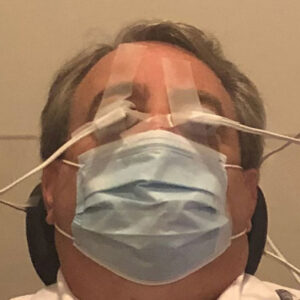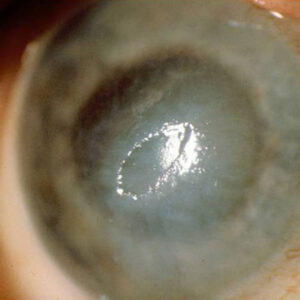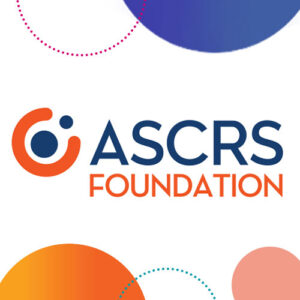Refractive
September 2023
by Ellen Stodola
Editorial Co-Director
The approval of Vuity (pilocarpine ophthalmic solution, Allergan) nearly 2 years ago was the first launch of a presbyopia drop into the market. Several physicians discussed their experience using this product in practice and how it has, or has not, worked for their patients. They also shared their thoughts on the future of the presbyopia drop market and other products in the pipeline.


Source: Jennifer Loh, MD
Steven Dell, MD, said there were high hopes for this product, but it was quickly discovered that the level of miosis obtained was not sufficiently robust or enduring. “This translated into a modest gain in reading ability for a short period of time,” he said. “To really achieve significant improvement in reading ability, a sub-2 mm pupil is needed. Data from the Vuity clinical trial noted that the mean pupil nadir was 2.3 mm, which occurred at 1 hour post-dosing, and as the pupil enlarged, the effect was lost. When coupled with the myopic shift encountered, this limited our use of Vuity to a small cohort of patients. Further, we found that very few patients went on to refill the drug. Dimming was less of a concern for patients, and those who continued to use the product found that the dimming seemed to become much less noticeable after the first few days.”
Dr. Dell also noted that his practice uses Vuity as a “rescue medication” for select individuals with unwanted images from corneal or IOL-related issues. Since the level of higher order aberrations (HOAs) decreases with the square of the pupil radius, shrinking the pupil in size by half results in a four-fold reduction in HOAs. “This has helped a select few patients,” he said. “There is a dose-related pupil response with Vuity, so in a pseudophake where ciliary spasm is less of an issue, a second dose a few minutes after the first can result in a better effect. Much of the effect of Vuity is gone in a few hours, which is unsurprising considering that pilocarpine was dosed QID for glaucoma.”
He added that he has not found Vuity to be particularly helpful in screening patients for the IC-8 Apthera (Bausch + Lomb), which can be used in eyes with significantly distorted corneas. “Instead, we simply place a pinhole in the phoropter over the patient’s refraction to gauge the level of improvement in acuity,” he said.
Jennifer Loh, MD, said that she is still using Vuity in her practice, but she looks for the ideal patient. This includes someone who is in the 40–50 age range, is an early presbyope, and is looking for relief from glasses. Those patients are usually great at using Vuity because they’re early on the journey, she said, adding that the FDA approval of BID dosing has also helped in terms of efficacy.
Dr. Loh added that she is cautious to ensure that the patient has no history of retina pathology, and she discusses the low risk for retinal detachment with use of this drop. She said she acknowledges what the patient might find if they do their own literature search on the internet. “I don’t want to shock or surprise them, and I want them to know my thoughts and the background on it and why I think they are a good candidate with a low risk profile for the drop,” she said.
Presbyopia is a journey, Dr. Loh said. This drop has its uses, but it may not work 100% of the time all day, she said. “I set the expectation that they may need to wear glasses still. I want them to be happy with the medicine and know that it’s an adjunct.”
Luke Rebenitsch, MD, has found these presbyopia drops to not be as effective as he had hoped for patients in his practice. “We were excited about this because it’s one more gateway for patients to know that there are solutions for presbyopia,” he said. “In our practice, we have tried it in the early presbyope, the one who’s not quite ready for blended vision with LVC or refractive lens exchange.”
Although according to FDA trials there was only a single-digit percentage of people who had a headache, redness, or irritation with the drops, Dr. Rebenitsch said these issues tend to be more significant in his practice, at least early on. “Our biggest issue was that only 30–40% of patients developed a significant enough clinical effect,” he said, adding that newer data shows that twice a day dosing is better without significant differences in adverse effects.
He added that he found it challenging to monetize this product in his practice in order to make it profitable. This is never the number one reason we do something, Dr. Rebenitsch said, but in order to run a practice, you have to find a way to make things profitable.
The bottom line, he said, is that it worked for a minority of early presbyopes but was not a practice builder. “Even worse, in patients in whom the clinical effect was not sufficient, it caused patients to lose trust in our practice.”
In terms of other products in development in the presbyopia drop market, Dr. Rebenitsch said a number of these have a similar mechanism of action, which is pupillary modulation to introduce depth of focus through a pinhole effect.
Dr. Rebenitsch said he is excited about some of the options in development but noted that pilocarpine alone is probably not sufficient. “There are numerous combination drops in development that may allow for an even smaller pupil without a myopic shift or other adverse effect,” he said.
He said he would be happy to use presbyopia drops in his practice as a bridge for those patients who are not yet ready for surgical treatment. “But it needs to work in a majority of patients, not just in a controlled study environment,” he said.
Dr. Rebenitsch also said that if these drops could become safe enough to be an over the counter option, this could help the industry in general. “They’re not that expensive to produce, and it would create an overall increased awareness for presbyopia, but that’s probably years in the future and may never happen,” he said, noting that it’s unlikely that something like Vuity would ever be an over the counter product because of the reports of retinal detachment.
Dr. Rebenitsch said he thinks there will be a presbyopia drop that works better in the future. “I think it has everything to do with pupil size, and I think one of these formulations will be more of a silver bullet,” he said. “It will never be perfect, but I am excited that in the next 3–5 years, we should have something that works better.”
Dr. Loh noted that the Orasis product in development is a lower dose pilocarpine that she said doctors might be more comfortable prescribing. She’s interested to see if this is as effective.
“The mechanism of action of the drops from Visus Therapeutics and LENZ Therapeutics are interesting to me as well,” Dr. Loh said. With the Visus product, there are two ingredients, brimonidine and carbachol, involved to help create and sustain the miosis by enhancing bioavailability. For the LENZ product, they report that the product, which contains aceclidine, helps with miosis but doesn’t cause as much ciliary body contraction that is common with other miotics and that’s thought to lead to some of the negative side effects, such as the myopic shift.
She added that the Ocuphire Pharma product is interesting from a mechanism of action standpoint, too, because of the two separate components, phentolamine and low dose pilocarpine, that patients can use. The phentolamine helps inhibits the iris dilator in order to help potentiate the effect of the low dose pilocarpine miosis.
“I think the barriers are making sure that eyecare professionals are comfortable using it,” Dr. Loh said. “That’s the issue now—how to get eyecare providers comfortable prescribing it, then patients demanding it.”
When Vuity was launched, Dr. Loh said she noticed pushback from doctors over the fact that it was “just” pilocarpine. “Unfortunately, the atmosphere among many was, ‘Let’s just prescribe generic pilocarpine,’” she said. “I wonder if the newer products with different mechanisms of action that we’re not as familiar with might incite more interest because eyecare professionals may think they’re more novel.”
Dr. Loh also noted that one concern voiced from many physicians is the risk for a retinal detachment. “We know from evidence that there’s not a strong causation, and the Vuity clinical trial did not have any retinal detachments in the study population, but it unfortunately has been imprinted on people’s minds now.”
This is an exciting field that can help patients before they are ready for presbyopia surgical options, she said. It can help bridge that gap because some of the most unhappy patients are those entering the age of presbyopia. “I’m grateful that the companies are working on solutions because before it was disheartening to tell patients there was nothing to be done but wear glasses,” she said. “Now at least there’s something to talk about that opens the conversation for future options, too.”
Dr. Dell also mentioned the product being developed by LENZ, which is an aceclidine- based formulation. “Aceclidine is unique among the various products in development in that it is what I refer to as a ‘pupil selective miotic,’” he said. “Aceclidine is excellent at creating a sub-2 mm pupil for about 10 hours, but it is quite bad at stimulating the ciliary muscle. That’s a desirable combination that effectively decouples miosis from ciliary spasm, myopic shift, and vitreoretinal traction.”
Dr. Dell said he regards all the compounds containing pilocarpine as roughly equivalent to Vuity, and the data bears that out. “A carbachol- based formulation in development was unable to consistently achieve a sub-2 mm pupil, and we know carbachol is unfortunately quite good at stimulating the ciliary muscle,” he added.
A presbyopia-correcting drop is a huge unmet need, Dr. Dell said. “The launch of Vuity was handled masterfully, and I have never seen a better development of consumer awareness of an entirely new category of drug in ophthalmology,” he said. “Despite these considerable efforts, our patients didn’t like this particular drug very much. We need stronger pupil selective miotics that last all day with a single dose. These are on the way.”
About the physicians
Steven Dell, MD
Dell Laser Consultants
Austin, Texas
Jennifer Loh, MD
Loh Ophthalmology Associates
Miami, Florida
Luke Rebenitsch, MD
Medical Director
ClearSight LASIK/43 Vision
Oklahoma City, Oklahoma
Relevant disclosures
Dell: LENZ, Allergan
Loh: Allergan, Orasis, Visus
Rebenitsch: None
Contact
Dell: steven@dellmd.com
Loh: jenniferlohmd@gmail.com
Rebenitsch: Dr.Luke@ClearSight.com



